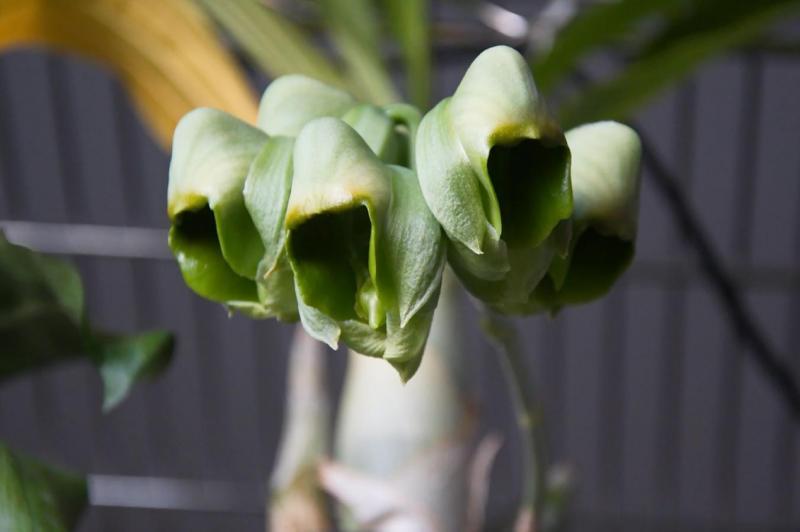Catasetum samaniegoi
Also known as: Samaniego's Catasetum in the subfamily: Epidendroideae
Native to: Provincia de Loja - Ecuador
General Information
Samaniego's Catasetum is a sympodial warm to hot growing orchid belonging to the sub family Epidendroideae native to Ecuador. It is named after the Ecuadorian Engineer.
Plant Description
Sympodial. Each new growth has numerous lance shaped oblong shaped leaves that grow to 8-40cm long. Pseudobulbs grow to 2.5-30cm
Flowers
Numerous fragrant blossoms appear
Fragrance
The orchid is fragrant.
Substrate(s)
- Coarse
- Bark
- Charcoal
- Treefern
- Spaghnum Moss
- Perlite
- IsFragrant
Climate
Grows at low elevations. Rainfall ranges from 8mm to 79mm per day, heaviest in August and lightest in March. Temperature ranges from 18C to 28C, highest in September (22C to 28C) and lowest in February (18C to 23C).
Watering
These orchids prefer a constant supply of moisture, with a slight drying out between waterings. Saucers can be placed under pots to retain moisture during hot weather, however the saucers should be removed or let to dry every 1-2 weeks to prevent rot. Keep an eye on the plant especially in hot weather and look for cues of under/overwatering and adjust accordingly.
During Summer, be sure to keep media moist. Keep moisture levels up during hot weather as the plant is prone to dehydrationFertiliser
These plants thrive on fertiliser, especially during periods of growth. Liquid fertiliser can be applied at the recommended strength, augmented with manure pellets or other quickly degradable fertiliser, applied away from the base of the plant, during periods of strong growth that occurs in the middle of the growth season.
Do not fertilise during the dormant period. Avoid using slow release fertiliser that breaks down for longer than 3 months, if using apply only after dormancy when new shoots have developed noticably, applied 4-5 pellets per cup (250ml) of media.
They can benefit from a high phosphate fertiliser leading up to flowering season, and by a high nitrogen fertiliser when new growth appears.
Use balanced fertiliser year round. This plant is a heavy feeder year round, full strength fertiliser can be used. Fertiliser can be applied heavily year round. Use a high Nitrogen fertiliser during Spring and Summer. Use a high Phosphorous fertiliser during Summer.Potting
Use water retentive media such as moss to prevent roots from drying out quickly This plant does very well in baskets or suspended pots Repotting is best done annually.




